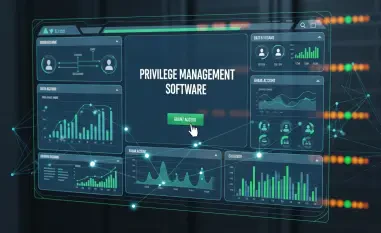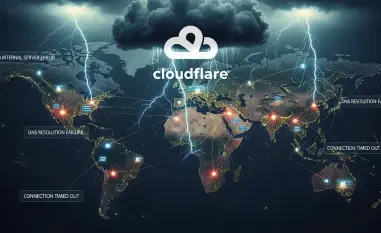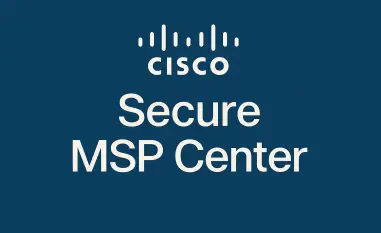Imagine a scenario where a single flaw in a widely used firewall system could grant attackers unrestricted access to an organization’s most sensitive network infrastructure, posing a grave threat to countless enterprises. This is the alarming reality due to a critical vulnerability in Palo Alto Networks’ PAN-OS software, specifically within the GlobalProtect portal. Identified as CVE-2024-3400, this security gap has sparked urgent concern across the cybersecurity community, with active scanning by threat actors already underway. This review delves into the technical intricacies of the vulnerability, assesses its real-world implications, and evaluates the measures needed to safeguard affected systems in an increasingly hostile digital landscape.
Understanding the Critical Flaw in GlobalProtect
The vulnerability in PAN-OS, tagged as CVE-2024-3400, represents a severe threat to organizations relying on Palo Alto Networks’ firewall solutions for secure remote access. It affects the GlobalProtect portal, a key component for VPN connectivity, and allows for arbitrary file creation that can escalate into full system compromise. With a CVSS 4.0 score of 10.0, the highest possible rating, this flaw underscores the pressing need for immediate attention in network security protocols.
Given its potential to enable command injection without requiring authentication, the issue stands out as a prime target for malicious entities. Security researchers have noted that the simplicity of exploiting this vulnerability amplifies its danger, especially as public exploit code has already surfaced. Organizations must recognize the gravity of this situation, as unpatched systems could become gateways for catastrophic breaches.
This review aims to dissect the technical underpinnings of the flaw, explore the ongoing threat activity, and provide clarity on mitigation strategies. As cyber threats evolve, understanding such vulnerabilities becomes crucial for maintaining robust defenses against sophisticated adversaries probing for weaknesses in critical infrastructure.
Technical Analysis of CVE-2024-3400
Mechanism of Arbitrary File Creation
At the heart of CVE-2024-3400 lies a deceptively simple exploit method involving manipulated session IDs. Attackers craft POST requests to the endpoint /ssl-vpn/hipreport.esp, enabling the creation of unauthorized files within the GlobalProtect directory. This initial step requires minimal technical sophistication, making it accessible to a wide range of threat actors.
The significance of this file creation mechanism cannot be overstated. Once a file is placed in the targeted directory, it serves as a foothold for further malicious activity. Security experts have highlighted that this process exploits a fundamental lapse in input validation, allowing attackers to bypass standard safeguards with ease.
This vulnerability’s design flaw reveals a critical oversight in how session data is handled within the system. As a result, even attackers with limited resources can initiate an exploit chain, positioning this issue as a high-priority concern for administrators managing affected PAN-OS versions.
Validation and Escalation Risks
Following the file creation, attackers typically send a GET request to verify the presence of the uploaded file, often receiving a “403 Forbidden” response as confirmation. This step does not execute code but serves as a critical indicator that the initial exploit was successful. Such feedback enables adversaries to proceed with confidence in their attack strategy.
The true danger emerges when this vulnerability is chained with additional techniques for executing operating system commands. Reports indicate that successful exploitation can grant root-level access to the firewall, effectively handing over complete control to unauthorized parties. This escalation potential transforms a seemingly minor flaw into a catastrophic risk.
Administrators must understand that the absence of authentication barriers in this exploit path significantly lowers the entry threshold for attackers. With public proof-of-concept exploits already circulating, the window for preemptive action is narrowing, emphasizing the need for swift and decisive response measures.
Threat Landscape and Active Exploitation Attempts
Recent observations by security researchers reveal a widespread scanning campaign targeting the GlobalProtect portal. A specific IP address has been identified issuing systematic POST and GET requests to locate vulnerable systems, demonstrating the automated nature of these probes. This activity signals that threat actors are actively seeking to capitalize on unpatched environments.
The ease of crafting these requests, combined with the availability of detailed exploit instructions online, heightens the urgency for organizations to act. Such scanning efforts often precede more aggressive exploitation attempts, where attackers aim to establish persistence within compromised systems. The cybersecurity community remains on high alert as these activities intensify.
While no large-scale breaches have been confirmed at this stage, the potential for significant damage looms large. The network-accessible nature of the vulnerability means that even opportunistic attackers or automated botnets could exploit it, making proactive defense a non-negotiable priority for affected entities.
Scope of Impact on PAN-OS Systems
The vulnerability specifically impacts PAN-OS versions 10.2, 11.0, and 11.1, particularly those configured with a GlobalProtect portal or gateway. Notably, other Palo Alto Networks offerings such as Cloud NGFW, Panorama, and Prisma Access remain unaffected, providing some relief to users of these platforms. However, the affected versions are widely deployed, amplifying the overall risk footprint.
The real-world consequences of an exploit could be devastating, with attackers potentially gaining full control over critical firewall infrastructure. This level of access could enable data theft, network disruption, or the deployment of persistent backdoors, all of which pose severe threats to organizational security and continuity.
Despite the absence of widespread confirmed incidents, the high CVSS score and the “HIGHEST” urgency rating from Palo Alto Networks underscore the imminent danger. Organizations running vulnerable versions must prioritize remediation to prevent falling victim to an attack that could have far-reaching operational and reputational consequences.
Mitigation Challenges and Protective Measures
Addressing CVE-2024-3400 presents several challenges, notably the ease of exploitation and the lack of authentication requirements. These factors, coupled with publicly available exploit code, create a perfect storm for rapid weaponization by malicious actors. Administrators face an uphill battle in securing systems before attackers can strike.
Palo Alto Networks has issued clear guidance to counter this threat, starting with immediate upgrades to patched versions such as 10.2.9-#, 11.0.4-#, and 11.1.2-###. Additionally, organizations with Threat Prevention subscriptions are advised to activate specific signatures to block exploit attempts at the GlobalProtect interface, adding a crucial layer of defense.
Beyond updates and signatures, monitoring for anomalous requests and following enhanced recovery procedures for potentially compromised devices are essential steps. Continuous vigilance for unusual activity, such as repeated error responses or unfamiliar user-agent strings, can help detect early signs of exploitation, allowing for timely intervention.
Long-Term Security Considerations for PAN-OS
Looking ahead, the emergence of vulnerabilities like CVE-2024-3400 highlights the evolving complexity of threats targeting network security infrastructure. Firewalls, once considered bastions of defense, are increasingly under scrutiny as adversaries develop novel ways to exploit trusted systems. This trend necessitates a shift toward more resilient security architectures.
Continuous monitoring and timely patching must become ingrained practices for organizations relying on PAN-OS and similar platforms. Beyond immediate fixes, adopting proactive measures such as regular security audits and threat intelligence integration can help anticipate and neutralize risks before they manifest into full-blown incidents.
The broader impact on trust in firewall solutions also warrants attention. As high-profile vulnerabilities surface, organizations may question the reliability of their security investments, prompting vendors to enhance transparency and responsiveness. This dynamic will likely shape the future of network security standards over the coming years.
Final Reflections on a Pressing Threat
Reflecting on the analysis, the severity of CVE-2024-3400 demanded urgent action from all stakeholders involved. The active scanning by threat actors underscored the immediacy of the risk, while the technical simplicity of the exploit heightened its potential for widespread abuse. Mitigation efforts, though robust, required swift implementation to outpace the escalating threat landscape.
Looking back, the response to this vulnerability served as a litmus test for organizational preparedness in the face of critical security flaws. Moving forward, the focus shifted to fostering a culture of rapid response and resilience, ensuring that lessons learned translated into stronger defenses. Investing in advanced threat detection and vendor collaboration emerged as key steps to safeguard against similar risks.
Ultimately, the incident highlighted the importance of preemptive strategies in network security. Organizations were encouraged to establish dedicated teams for vulnerability management and to prioritize partnerships with cybersecurity experts for real-time threat insights. These measures aimed to build a fortified front against the ever-adapting tactics of cyber adversaries.













